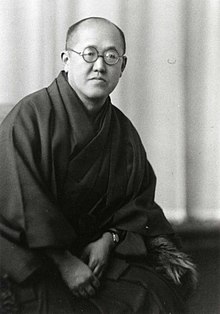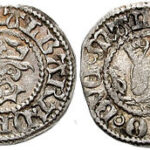How Did Kawase Hasui Influence Japanese Art?
Kawase Hasui was one of the most influential Japanese artists of the 20th century, particularly in the Shin-Hanga (“new prints”) movement. His exquisite woodblock prints captured the beauty of Japan’s landscapes, towns, and seasonal changes, blending traditional Ukiyo-e techniques with Western-inspired elements such as lighting and perspective. Hasui’s contributions played a crucial role in the modernization and global recognition of Japanese art.
The Early Life of Kawase Hasui
Born in 1883 in Tokyo, Kawase Hasui initially pursued Western-style painting but later transitioned to traditional Japanese woodblock printing. His artistic journey began under the mentorship of Kaburagi Kiyokata, a renowned figure in the Shin-Hanga movement. Hasui’s first major works, produced in collaboration with Shōzaburō Watanabe, the leading publisher of Shin-Hanga prints, helped define his signature style of atmospheric landscapes and poetic depictions of everyday life.
Shin-Hanga Movement and Hasui’s Role
The Shin-Hanga movement, which emerged in the early 20th century, sought to revitalize traditional Ukiyo-e art by incorporating modern aesthetics. Unlike traditional Ukiyo-e prints that focused on flat colors and stylized compositions, Shin-Hanga artists like Hasui emphasized natural lighting, depth, and rich gradations of color. Hasui’s prints became some of the most celebrated pieces of this movement, bridging the past and present in Japanese art.
Signature Themes in Kawase Hasui’s Art
1. Tranquil Landscapes
Hasui is best known for his landscape prints, which beautifully capture the essence of Japan’s rural and urban scenery. He depicted famous landmarks, serene countryside views, and tranquil temples with meticulous detail. His prints often evoke a deep sense of nostalgia and quiet contemplation.
2. Seasonal and Weather Depictions
One of Hasui’s most remarkable artistic strengths was his ability to illustrate different seasons and weather conditions. His winter scenes are particularly admired, with detailed snowfall and glowing lanterns creating a soft, dreamlike atmosphere. Similarly, his depictions of rain-soaked streets and misty mornings evoke a sense of solitude and peace.
3. Influence of Western Art
Hasui incorporated Western-style perspective and lighting techniques into his woodblock prints. He skillfully used shading and vanishing points to create depth, making his work distinct from traditional flat Ukiyo-e compositions. His ability to blend Eastern and Western elements set him apart as a pioneering figure in Japanese art.
Global Recognition and Impact
1. Preservation of Traditional Woodblock Printing
At a time when Japanese traditional arts were declining due to industrialization, Hasui helped preserve the woodblock printing technique. His dedication to this craft ensured that Shin-Hanga prints remained relevant in modern Japan and beyond.
2. Inspiration for Contemporary Artists
Hasui’s influence extends beyond Japan, inspiring contemporary artists in printmaking, animation, and illustration. His meticulous attention to atmosphere and mood has been referenced in Japanese anime, graphic design, and even Western pop culture.
3. UNESCO Recognition
One of Hasui’s works, “Zojoji in Snow,” was designated as an Intangible Cultural Heritage by UNESCO in 1956. This recognition further solidified his legacy as a master of Japanese landscape art.
Conclusion
Kawase Hasui’s contributions to Japanese art are undeniable. Through his breathtaking woodblock prints, he revitalized traditional techniques, modernized Japanese aesthetics, and left a lasting impression on global art culture. His ability to blend tradition with innovation ensures that his work continues to inspire and captivate audiences worldwide.
Whether you are an art lover, a collector, or a history enthusiast, exploring Hasui’s prints offers a glimpse into the beauty of Japan’s landscapes and the timeless elegance of Japanese woodblock artistry.





